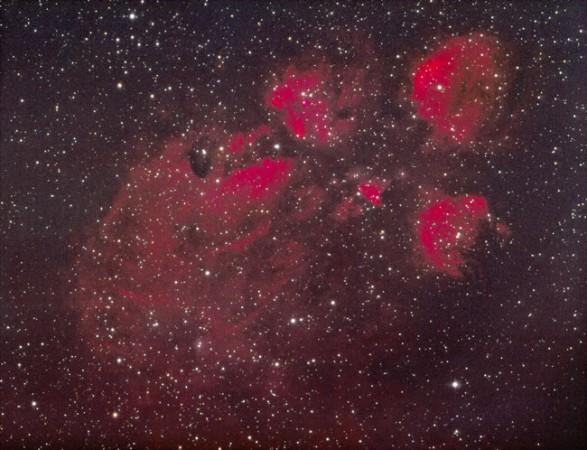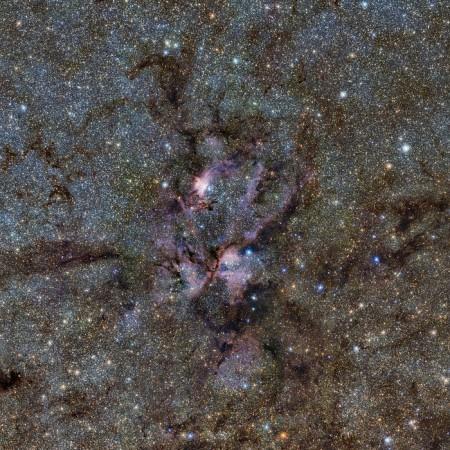
The Cat's Paw Nebula and the Lobster Nebula, have been analysed by astronomers for quite a while noww.
Also Read: NASA's Cassini makes unprecedented discovery about Saturn!
The Very Large Telescope Survey Telescope captured the latest and one of the largest images released by the European Southern Observatory (ESO) so far, which is almost two billion pixels!

The Cat's Paw Nebula
Also known as NGC 6334, it is an emission nebula made up of ionized gases that discharge colourful light. It is located at a distance of 5,500 light years from Earth and is present in the constellation of Scorpius.

The Lobster Nebula
Dubbed NGC 6357, this nebula is a diffuse nebula, which means they don't have any specifically defined boundaries. Like the Cat's Paw nebula, this nebula too is located in the constellation of Scorpius near the tip of its tail.
These two celestial objects were first spotted by British scientist John Herschel in June 1837 when he was on his three-year tour to the Cape of Good Hope, South Africa.
He could only document the most luminous "toepad" of the Cat's Paw Nebula. It took many decades before the actual shape of the nebulae could be realised and given names.
Modern telescopes spotted the Cat's Paw Nebula's three toepads and the Lobster Nebula's claw-like regions, these were found to comprise mostly hydrogen gas, which is charged with the light of newborn stars.
These young hot stars emit powerful UV light and are around 10 times the mass of the Sun. These stars are ionised when their photons come in contact with the hydrogen present in the region.
The astronomers discovered the tendrils of dust that are light-obscuring, fluttering through both the nebulae with the help of the Very Large Telescope Survey Telescope (VST). The VST's OmegaCAM camera captured this stunning image, which is one of the largest photos ESO has ever released.
In 2010, the Cat's Paw Nebula was photographed using the Wide Field Imager (WFI) in visible light, along with a filter to capture the luminosity of hydrogen more clearly. The WFi is presently installed on La Silla's MPG/ESO 2.2-metre telescope.
The Lobster Nebula was closely analysed by ESO's Very Large Telescope, and various hot stars were also observed by this telescope; these stars impact the shape and colour of the nebula.
These nebulae are blanketed by a broad layer of debris which prevents modern devices from detecting most of the matter present in them.
One of the most active stellar nurseries in the known universe is the Cat's Paw Nebula, which shelters thousands of stars whose luminosity, though not visible to the naked eye, but on analysis of infrared wavelengths, with the help of ESO's VISTA telescope, scientists revealed star-forming activities.
Examining nebulae in different wavelengths of light reveals different things; for example, when the Lobster Nebula is observed in infrared light, a part of it looks like a dove and the other part appears to be a skull. Due to this reason, the Lobster Nebula is also known as the "War and Peace Nebula".

















